Emilio Ambasz architect, Veneto Lifetime Achievement Award, University of Bologna news, Green building design
Emilio Ambasz architect
post updated 8 November 2023
IN/ARCH celebrates an historic moment: Emilio Ambasz receives the Lifetime Achievement Award
In a groundbreaking moment for IN/ARCH – the Italian National Institute of Architecture, the prestigious Lifetime Achievement Award is conferred for the first time to a non-Italian architect. Emilio Ambasz, deeply touched by the generosity of this recognition, is an Argentinian by birth and a cosmopolitan by vocation, profoundly intertwined with Italy. He stands out as one of the most extraordinary designers in the global history of architecture.
Banca degli Occhi, Venice, Italy:
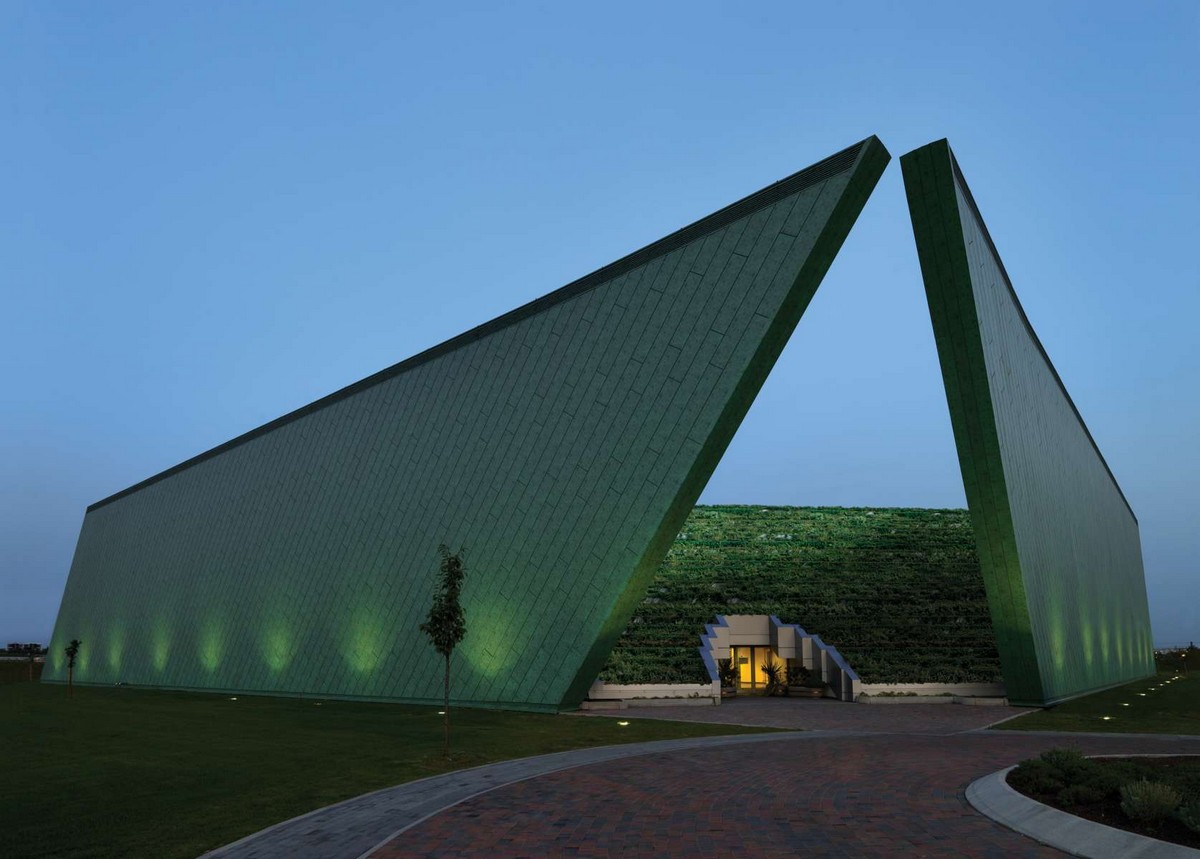
photograph : Enrico Cano, courtesy of Emilio Ambasz Associates
IN/ARCH Veneto Lifetime Achievement Award News
Venice/New York, 7 November 2023 – The jury of the IN/ARCH Lifetime Achievement Award, bestowed by the National Institute of Architecture (IT) has chosen Emilio Ambasz, the first non-Italian prominent figure to receive this award. The jury has acclaimed Ambasz as: “the greatest ambassador of Made in Italy for his iconic exhibition, at the MoMA in 1972, titled Italy: The New Domestic Landscape. This groundbreaking exhibition non only marked the first real introduction of the Italian identity to the United States but also transcended borders, impacting everything from the urban landscapes to objects, homes and even the automotive industry, offering an extraordinary stage to our country’s young talents.” An architect of global influence, and an extraordinary contributor to the history of contemporary architecture.
Recognized as a precursor, a father, a poet and a prophet of green architecture (James Wines called him “the Messiah” of this vision), Ambasz has crafted a legacy with works spanning from Japan to the USA, passing through Italy and other countries. These creations stand resolutely at the heart of the discipline’s ongoing poetic and design discourse. Inspired by his personal motto “Green over grey”, Ambasz’s oeuvre has influenced some of the most famous designers of contemporary architecture.
“He has always showed a tangible vision of nature, devoid ideologies and grandiose leaps, instead focusing on the practical art of ‘making architecture’ – reads the jury’s motivation – in fact, he had already introduced ‘architecture and plants’ in the seventies, without fanfare but with a rational combination of ‘nature and artifice’. Noteworthy examples of this design ethos are Ospedale dell’Angelo, Fondazione Banca degli Occhi in Mestre (2007-2008), and the Acros Fukuoka project in Japan.”
Ospedale dell’Angelo, Venice, Italy:
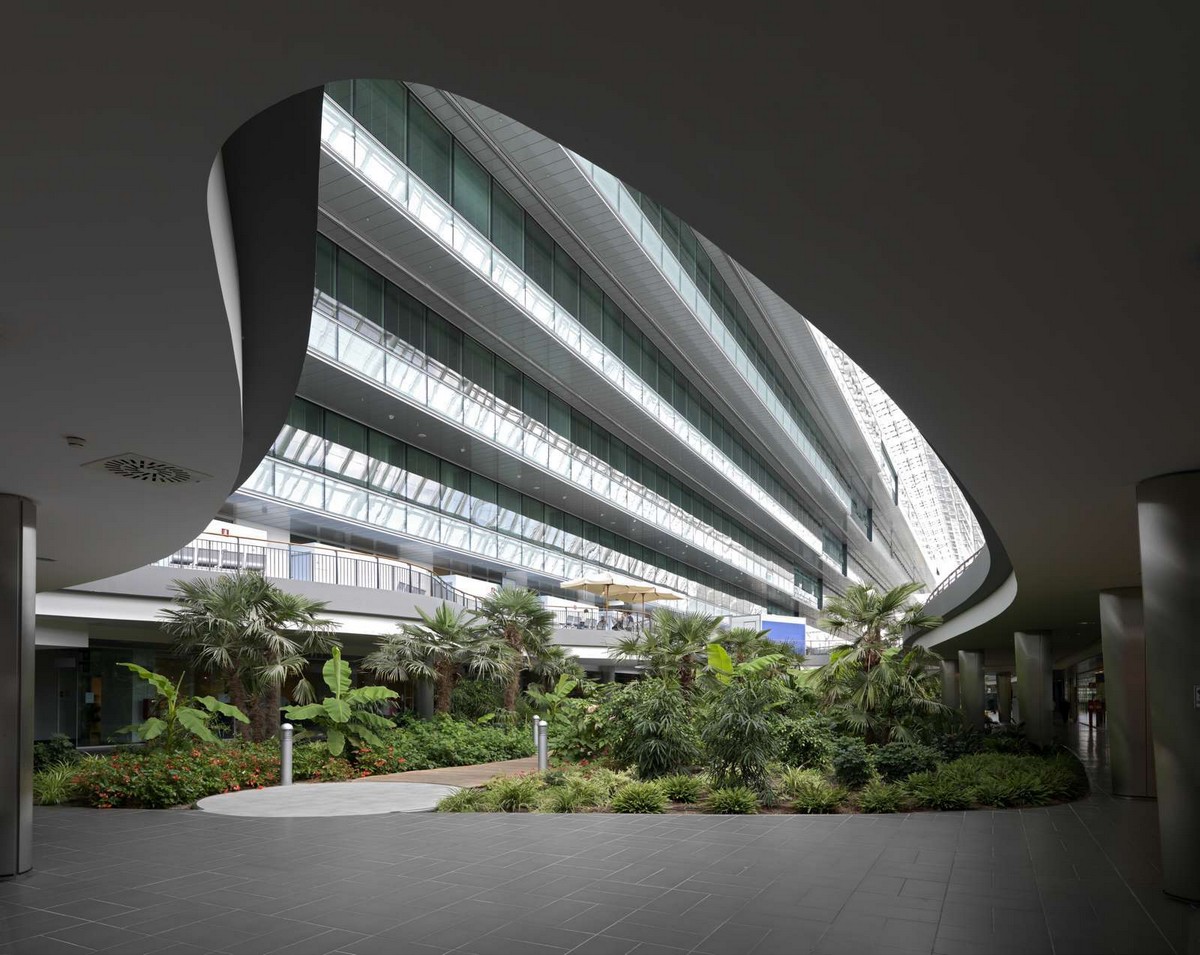
photograph : Enrico Cano, courtesy of Emilio Ambasz Associates
Thanks to his works and his persevering search for a reconciliation between man and nature, Ambasz has received countless awards and recognitions all over the world.
In recent months, Ambasz has won the President’s Award of the Consortium for Sustainable Urbanization Prize (CSU) in New York, and he is one of the protagonists of MoMA’s current exhibition “Emerging Ecologies”.
MoMA, like the Metropolitan Museum (NY), includes in its permanent collection a consistent number of Ambasz’s pieces, including a Vertebra chair (1975) – the first automatically ergonomic chair, developed in collaboration with G. Piretti. This iconic chair not only sparked a new industry within the sector but also earned the Compasso d’Oro in 1981.
Serving as the MoMa’s Curator of Design for the Department of Architecture and Design from 1969 to 1976, Ambasz organized a series of revolutionary exhibitions, including the aforementioned and legendary Italy: The New Domestic Landscape (1972), which catapulted Italian design objects into global prominence, leaving an indelible mark on the world stage.
Emilio Ambasz, green architect:

photo : Wade-Zimmerman
Ambasz’s influence extends globally, with exhibitions paying homage to him worldwide. From the MoMA in New York (featuring twice) to the Triennale in Milan (also twice), to the Reina Sofia in Madrid, and spanning to Tokyo, Geneva, Bordeaux, Zurich, Chicago, Philadelphia, Mexico City, San Diego, and Saint Louis.
Ambasz is an honorary member of the American Institute of Architects and the Royal Institute of British Architects; he is an all-round intellectual, an architect, a designer, a prolific inventor — awarded with three Compasso d’Oro and an impressive number of tributes from all over the world—an artist, a narrator and a curator, with a deep connection to Italy, where he stays part of the year.
Ambasz’s presence at multiple Venice Architecture Biennales highlights the continued recognition of his impact. In 2014, he received the title of Commander of the “Stella al Merito della Repubblica italiana” for “his contributions to Italian culture”. Throughout his career, Ambasz has also received an honorary degree in 2021 at the University of Bologna, the Sigillo delle Arti in 2021 at University of Urbino, the IV Compasso d’Oro for Lifetime Achievement in 2021, the ADI Award (Italian Design Association), the IN/ARCH Veneto Lifetime Achievement Award in 2023. His body of work is complemented by recognized publications and significant collaborations with various Italian industries. In the upcoming weeks, Ambasz is poised to receive yet another HC Degree, this time from a prestigious Italian university.
Lucile Halsell Conservatory, San Antonio, Texas
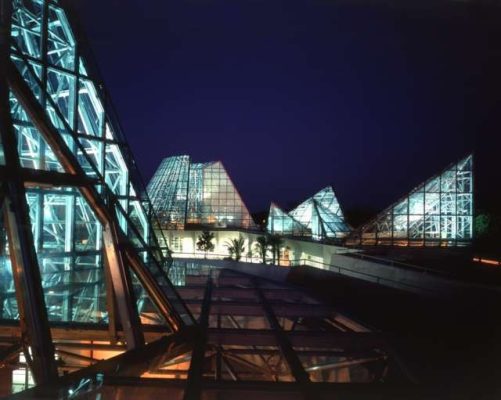
photo courtesy of Emilio Ambasz & associates
When asked to comment on the IN/ARCH’s Lifetime Achievement Award, Ambasz commented: “I’m deeply touched to receive this generous award. It is a great honour to be the first foreigner to receive it […] We need an architecture that serves as a pact of reconciliation between nature and buildings. As architects and designers, our responsibility is to create an alternative future for a better quality of life, provide a roadmap to guide away from perpetuating the present conditions: I believe that all architectural projects failing to propose a new or a better existence are unethical.” He concluded his remarks with: “While the enormity of this task may waver the imagination and paralyse hope for a moment, we cannot afford to shy away from its pursuit.”
Award Ceremony of the IN/ARCH – National Architecture Awards 2023:
Venice, 7 November 2023, Ca’ Giustinian, 2:00pm
19 September 2023
IN/ARCH Veneto Lifetime Achievement Award
The IN/ARCH (IN/ARCH Italian National Institute of Architecture) Veneto Lifetime Achievement Award has been conferred unanimously to Emilio Ambasz, the prophet of green architecture. Born in Argentina, cosmopolitan in life and work, deeply connected to Italy, Ambasz is one of the most extraordinary designers in the history of architecture.
The IN/ARCH, the Italian National Institute of Architecture, has been promoting and coordinating architectural studies for over 60 years, rewarding achievements and figures who represent architectural culture with excellence and whose works constitute an important contribution to the history of contemporary architecture.
ACROS centre Fukuoka, Kyushu Island, Japan, design by Emilio Ambasz:
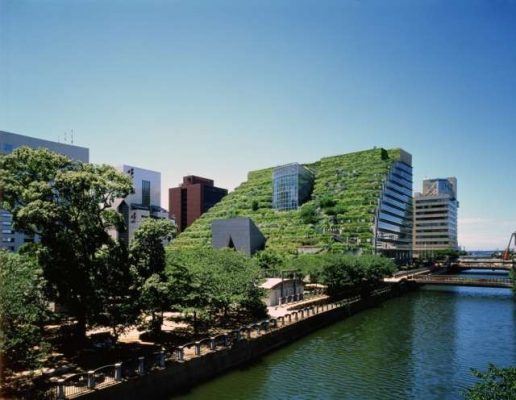
image courtesy of Emilio Ambasz & associates / ambasz.com
Italy, September 2023 – The awarding ceremony of the IN/ARCHITETTURA Prizes 2023 has taken place (15 September 2023) at Museo Revoltella in Trieste, organized by IN/ARCH, Ance in collaboration with Archilovers, and under the patronage of Anci and CNAPPC. The Lifetime Achievement Award has been conferred to Emilio Ambasz, an excellent exponent of the global architecture culture, and an extraordinary contributor to the history of contemporary architecture.
“Emilio Ambasz, pioneer of the ‘back to nature’ approach, has been recognized and celebrated internationally as a father, a poet and a prophet to green architecture. Further, Ambasz has also curated the cult exhibition Italy: the New Domestic Landscape at MoMA in New York, which has brought Italian design to worldwide prominence,” reads the jury’s motivation.
The jury composed by Lucia Krasovec-Lucas, president, and its members Sandro Boscaini, Carla Broccardo, Michele Franzina, Valerio Pontarolo, Donato Riccesi, Giovanni Salmistrari, and Miriam Venier have unanimously voted for Ambasz.
Ambasz, born in Argentina but cosmopolitan in life, “has shown a sincere interest for Italy” which, in turn, has reciprocated the feeling with prizes, invitations, and awards. Among the works realized in Italy, the following are noted for their relevance: Fondazione Banca degli Occhi and Ospedale dell’Angelo, also known as the ‘Health Garden’ (both in Mestre-Venice).
Ambasz has commented “I’m particularly grateful for this award as it comes from a territory I’ve been very fond of since I was a student.”
In jury’s words “with his style, which he himself describes as ‘green over grey’, he has implemented an unprecedented combination of architecture and vegetation for the seventies, giving shape and substance to achievements that are regarded as fundamental examples for green architectures, today experimented in every corner of the globe.”
His idea is a poetic one “an anticipated and revolutionary act of reconciliation with nature, for which nature itself can only be an ally in the construction of a new world, and in the human healing, both from the material and immaterial point of view. Today, this idea is a founding element of each architecture and each city.” (Lucia Krasovec-Lucas, President IN/ARCH Triveneto).
This vision is going to be, among other things, the core of Emerging Ecologies: Architecture and the Rise of Environmentalism at MoMA (MUSEUM OF MODERN ART, NEW YORK). This is the first museum exhibition of works (150) that examines the relationship between architecture and the environmental movement in the United States. Emerging Ecologies (from 17/09/2023 to 20/01/2024) is also the first exhibition realized by the Emilio Ambasz Institute for the Joint Study of the Built and Natural Environment, founded within MoMA in 2020, with the generous support and contribution of the Legacy Emilio Ambasz Foundation (LEAF).
Ambasz is an honorary member of the American Institute of Architects and the Royal Institute of British Architects. He is among the foremost international masters of architecture and design, boasting an impressive number of publications, awards, recognitions, and honours awarded worldwide. In 2014, he has been bestowed with the title of Commander of the ‘Stella al Merito della Repubblica italiana’ for “his contributions to Italian culture,” a vision shared by the President of IN/ARCH Triveneto, Lucia Krasovec-Lucas, who has highlighted his “important work in spreading Italian architectural and design culture.”
post updated 4 May 2023
Ecological Architecture
Emilio Ambasz lecture on Ecological Architecture
Princeton, New Jersey – On Thursday, April 20, at the Betts Auditorium of Princeton University, Emilio Ambasz gave the lecture ‘Ecological Architecture’. Organized thanks to the Kenneth Kassler Memorial Lecture Fund, the conference – (rescheduled Fall 2022 Kassler Lecture) – represented for the father of green architecture a return to the university where he studied and, still very young, taught architecture.
Casa de Retiro Espiritual, Seville, Spain:
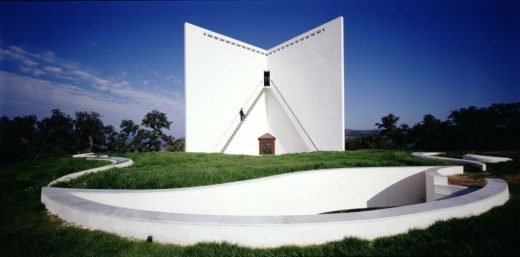
photo courtesy of Emilio Ambasz & associates
Emilio Ambasz (born 1943, Argentina; Spanish citizen by Royal Grant) is an internationally acclaimed, award-winning architect, designer, and inventor widely recognized as a pioneer of Green Architecture.
Integrating landscape and building, returning to the community is paramount in his work. He has completed a number of public projects around the world including the Lucile Halsell Conservatory in San Antonio, Texas, USA, and the Prefectural International Hall in Fukuoka, Japan. His home, Casa de Retiro Espiritual in Seville, Spain, or “Spiritual Retreat”, is an example of how architecture can coexist with the landscape.
Ambasz studied at Princeton University where he completed the undergraduate program and received a Master’s Degree in Architecture. Shortly after, he taught as Philip Freneau Preceptor of Architecture. From 1969 to 1976, he served as Curator of Design at the Museum of Modern Art, in New York City, where in 2020, the Emilio Ambasz Institute for the Joint Study of the Built and the Natural Environment was established in his name.
Ambasz has been the subject of numerous international publications and exhibitions. He has had solo presentations at the Museum of Modern Art, New York; La Triennale di Milano; The Arts Institute of Chicago; The Museum of Contemporary Art Reina Sofia-Madrid; Le Centre Canadien d’Architecture; and the Tokyo Gallery of Contemporary Art; among others. His architectural work has been featured in publications such as Domus, ON, Space and Design, Architectural Record, and Architecture plus Urbanism. Most recently, Rizzoli published a monograph written by Barry Bergdoll called Emilio Ambasz: Curating a New Nature (November 2022).
Prefectural International Hall, Fukuoka, Japan
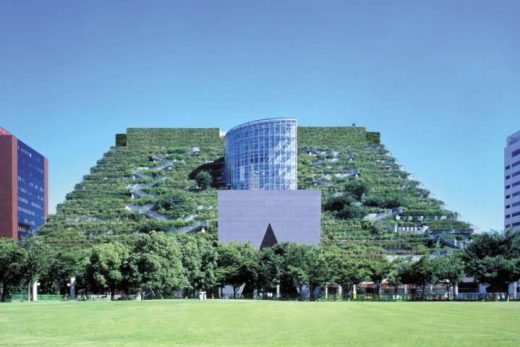
photo courtesy of Emilio Ambasz & associates
Among his many awards and honours, Ambasz is an Honorary Fellow of the American Institute of Architects and an Honorary International Fellow of the Royal Institute of British Architects. In 2014, he was awarded the Medal of Science, the highest honour bestowed by the Institute for Advanced Studies of the University of Bologna. Additionally, Ambasz was granted the honorific title of Commendatore d’Italia, Stella d’Oro, by the Presidency of the Italian republic for his contributions to Italian culture. In 2021, the University of Bologna awarded him an Honorary Doctoral Degree in Architecture and Engineering. In 2023, Politecnico di Torino university awarded him an Honorary Master Degree in Systemic Design.
Poster of the lecture with a portrait of Ambasz, by James Wine:
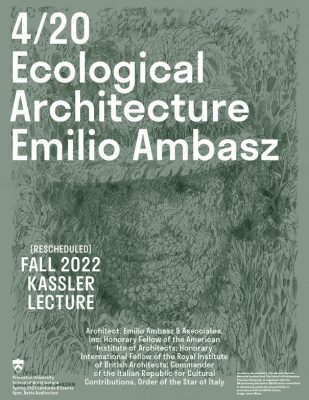
photo : James Wine
Lecture made possible by the Kenneth Kassler Memorial Lecture Fund. The School of Architecture, Princeton University, is registered with the AIA Continuing Education (AIA/CE) and is committed to developing quality learning activities in accordance with the AIA/CE criteria.
Previously on e-architect:
25 January 2022
Emilio Ambasz Book
A new book written by Emilio Ambasz:
EMILIO AMBASZ. GREEN ARCHITECTURE & DESIGN FAIRY TALES
The book edited by Fulvio Irace collects for the first time the corpus of writings by Emilio Ambasz, father, poet, and prophet of green architecture: fables, notes, stories, fragments and notes that lead to the heart of the poetic and creative Universe of the great Argentine inventor.
Just as Ambasz understands architecture as the search for a spiritual home, the poetic essence of his fables – accompanied by the drawings of Daniela Blandino – “resists time with its core of truth disguised as children’s fairy tales”, writes Irace. Extraordinary personality, Emilio Ambasz has crossed and crosses the world of creativity in the broadest sense of the term in many ways.
With the power of his anticipatory gaze, he wanted to represent the world of forms of a wonderful possible, combining, with his ‘gentle manifesto’, spiritual and material project, nature, and humanity.
Emotional and sensual, his projects are based on ideas and thoughts destined for a different approach to existence, and the collection of texts in this book retraces some of his most iconic creations, together with the tales of loved or dreamed cities and the dialogues with architects and artists with whom he established a singular relationship of ‘elective affinities’.
“The invention of the fables that I have written in the last fifty years – as Ambasz likes to remind – is the fulcrum of my working methods, not just a literary accessory. The subtext of a fable, after all, is a ritual, and it is precisely in support of the rituals that most of my work develops”.
EMILIO AMBASZ. GREEN ARCHITECTURE & DESIGN FAIRY TALES, edited by Fulvio Irace, with illustrations by Daniela Blandino, publisher Corraini Editore
14 June 2021
Emilio Ambasz Architecture News
Emilio Ambasz to receive an honorary degree from the University of Bologna (Italy)
Known as the trailblazer for “Green Architecture“, the architect/engineer who went against the grain in the ’70s by covering his buildings with greenery will receive an honorary degree in Building Engineering – Architecture from the University of Bologna.
The ceremony will take place on Friday 25 June, at 4.30 p.m., at the Church of Santa Cristina (Piazzetta Giorgio Morandi, 2 – Bologna), when Emilio Ambasz, the trailblazer for “Green Architecture”, will be awarded his honorary degree. After a welcome by the Rector Francesco Ubertini and the Head of the Architecture Department Fabrizio Ivan Apollonio, Emilio Ambasz will receive an honorary degree in Building Engineering – Architecture. Closing the ceremony will be music from the Collegium Musicum Almae Matris.
The University’s Architecture Department explained the reason for Emilio Ambasz’s recommendation to be awarded the honorary degree as follows: “The Argentinian architect and designer was, from 1969 to 1976 curator at the Department of Architecture at the Museum of Modern Art of New York. Ambasz’s distinctive style as a pioneer is a combination of buildings covered with gardens, which he describes as “green on grey”: he uniquely went against the grain of the post-modernist and de-constructionist trends of the ’70s, covering his architecture with greenery.
Botanical Center – San Antonio, Texas, USA, 1982:

photo courtesy of Emilio Ambasz & associates
As a designer Ambasz is constantly interested specifically in the relationships between anthropic space and natural space, and he adopted architectural and technological solutions that ensured his architecture was both highly integrated with its setting and improved the perceptual and habitational quality of the spaces. The intention, however, was not limited to the figurative dimension of the architectural results, but extended to the technological significance of the solutions, in terms of both construction feasibility and performance.”
ENI headquarters – Rome, Italy, 1998:

photo courtesy of Emilio Ambasz & associates
Ambasz has demonstrated his vocation in the field of industrial and mechanical design, where he has conducted his own personal research into the development of design components and products that have led to numerous patents in his name (more than 220). Interaction with the world of industrial processes, and more generally with the dimension of problem solving in engineering, is a distinctive feature of his work as a design engineer.
Born in Argentina (13 June 1943, Resistencia, Chaco), Emilio Ambasz is also a citizen of Spain by Royal Grant. He studied at Princeton University, where he completed the 4-year undergraduate degree course in one year and received a Master’s degree in Architecture from the same university the following year. He was curator of Architecture and Design at the Museum of Modern Art of New York (1969-76), where he headed and curated numerous architecture and industrial design exhibitions, including the legendary exhibition Italy: The New Domestic Landscape, in 1972 (bringing Italian design objects to the attention of the whole world); The Architecture of Luis Barragan, in 1974; and The Taxi Project, in 1976.
Ospedale dell’Angelo – Venice, Italy, 2008:
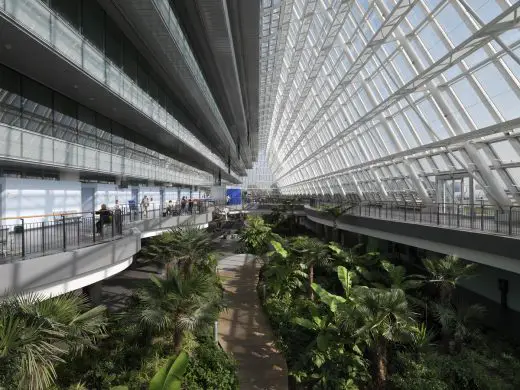
photo courtesy of Emilio Ambasz & associates
An honorary member of the American Institute of Architects and of the Royal Institute of British Architects, Ambasz has twice been president of the Architectural League (1981-85). He has taught at the School of Architecture at Princeton University as Philip Freneau Preceptor of Architecture and was a visiting professor at the Hochschule für Gestaltung in Ulm, Germany.
Some of the highlights among his architecture projects include the Grand Rapids Art Museum in Michigan, winner of the Progressive Architecture Award in 1976; the Casa de Retiro Espiritual in Seville, Spain, winner of the Progressive Architecture Award in 1980; the Conservatory of the San Antonio Botanical Garden in Texas, winner of the Progressive Architecture Award in 1985, of the National Glass Association Award for excellence in commercial design (1988) and of the Quaternario Award (1990); and the Acros centre in Fukuoka, Japan, which won the highly prestigious American Institute of Architects’ Business week/Architectural Record Award (2000) and first prize from the Architectural Institute of Japan (2001).
Italian Pavilion – Venice, Italy, 2021:
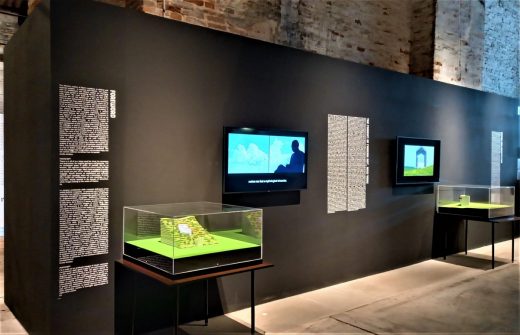
photo courtesy of Emilio Ambasz & associates
He also won First Prize and Gold Medal in the competition to design a master plan for the Universal Expo in 1992, held in Seville in Spain, to celebrate the 500th anniversary of the discovery of America. The headquarters he designed for the Financial Guaranty Insurance Company in New York won the Grand Prize at the International Interior Design Awards in the United Kingdom (1987), as well as the IDEA Award from the Industrial Designers Society of America in 1986.
He won first prize in the urban planning competition for the Eschenheimer Tower in Frankfurt, Germany (1986). His Banque Bruxelles Lambert in Lausanne, Switzerland, won the Annual Interiors Award (1983).
Ambasz represented the United States at the Biennale di Architettura in Venice in 1976.
Since 1980 Ambasz has been Chief Design Consultant for Cummins Engine Co. He has patented numerous industrial and mechanical designs, and his Vertebra chair – the first automatic ergonomic chair in the world, developed with G. Piretti, which triggered a new industry for the whole sector – is included in the design collections of the Museum of Modern Art and the Metropolitan Museum of Art, New York. MoMA also included his 3-D Geigy Graphics poster and his Flashlights lamp in its design collection.
Important Emilio Ambasz solo exhibitions have been held all over the world, from MoMA in New York (twice) to the Milan Triennale (twice), to the Reina Sofia in Madrid, not to mention Tokyo, Geneva, Bordeaux, Zurich, Chicago, Philadelphia, Mexico City, San Diego and Saint Louis, celebrating his unique design, creative flair and moral commitment.
He has four Compassi d’Oro (1981, 1991, 2001, 2020 – the last one for his career), and he was named “Commander of the Order of the Star of Italy” in 2014, for “his contribution to Italian culture”. Ambasz has written numerous books on architecture and design, including Natural Architecture, Artificial Design, published for the first time by Electa in 2001 with an extended edition published four times since then.
Emilio Ambasz to receive an honorary degree from the University of Bologna images / information received 140621
Previously on e-architect:
Architectural Design
Emilio Ambasz Research Institute at MoMA NY

photos courtesy of Compasso d’Oro
Emilio Ambasz Research Institute at MoMA NY
MoMA Emilio Ambasz Research Institute, New York, NY, USA
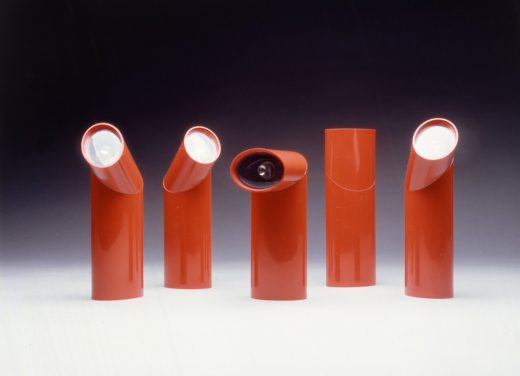
photo courtesy of Emilio Ambasz & associates
Emilio Ambasz Compasso d’Oro award
ACROS centre, Fukuoka City, Kyushu Island, Japan
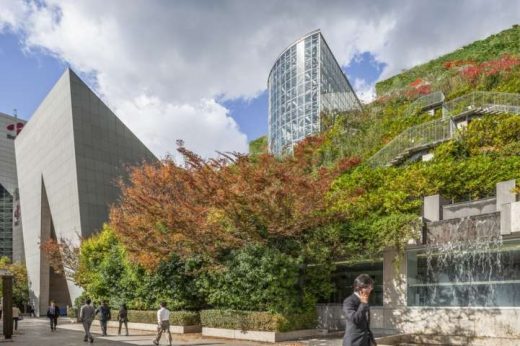
photo courtesy of Emilio Ambasz & associates
Fukuoka’s ACROS centre by Emilio Ambasz
Italian Pavilion at the 17th International Architecture Exhibition
Casa de Retiro Espiritual, 41880 El Ronquillo, Seville, Spain:
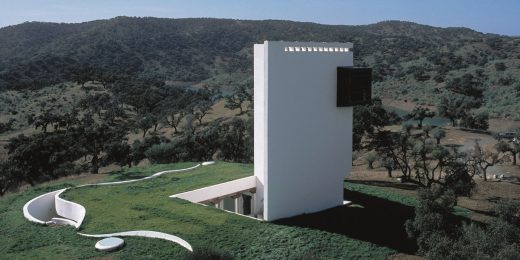
photo courtesy of Emilio Ambasz & associates
Italian Pavilion Venice Biennale 2021
Architects and Architecture Design
Comments / photos for the Emilio Ambasz to receive an honorary degree from the University of Bologna page welcome





